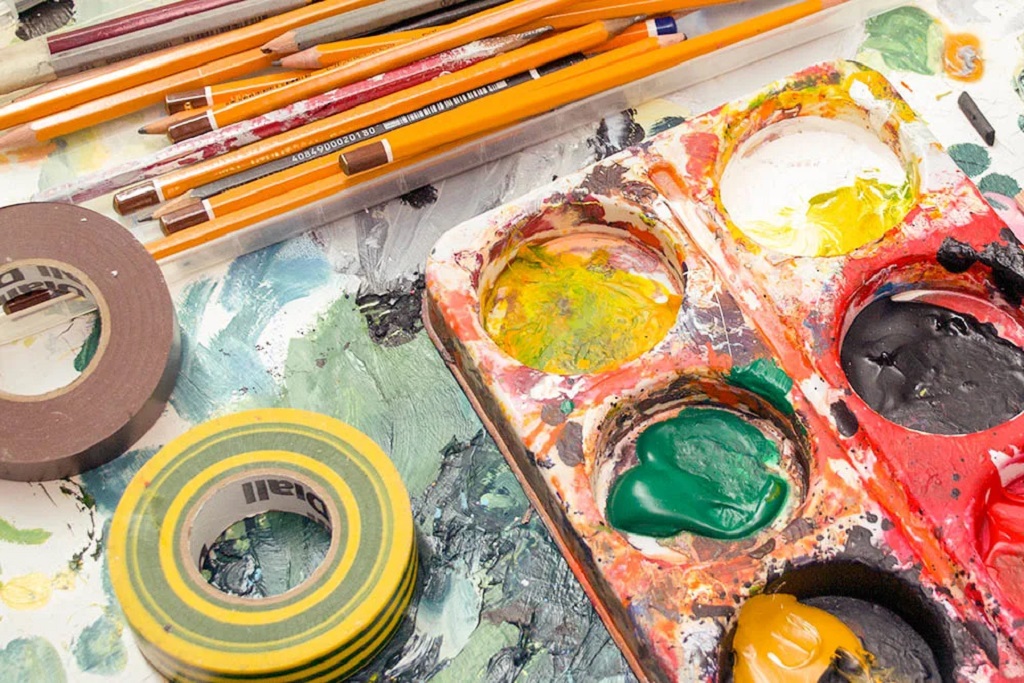Have you ever stood in a museum, mesmerized by a masterpiece, and wondered – how did they do that? The techniques employed by the masters can seem like a secret code, their brushstrokes imbued with magic beyond mere paint on canvas. But fear not, aspiring artists! The artistic toolbox of the masters is not an exclusive domain. By delving into some core techniques, you can unlock a new level of expression and refinement in your work.
Beyond Inspiration: Unveiling the Tools of the Trade
While artistic talent and vision are undeniable, mastering techniques is what allows artists to translate their inner world onto the canvas. Here, we explore some fundamental techniques employed by the masters, each offering a gateway to artistic growth:
-
Light and Shadow (Chiaroscuro): From the dramatic contrasts of Caravaggio to the soft, diffused light of Vermeer, mastering light and shadow is essential for creating depth, form, and mood in your artwork. Understanding how light interacts with different objects will allow you to depict believable three-dimensionality on a two-dimensional surface.
-
Perspective: Linear perspective, developed during the Renaissance, revolutionized how artists depicted space. By understanding vanishing points and how objects recede into the background, you can create a sense of depth and realism in your artwork. However, mastering perspective doesn’t mean being confined by it. Artists like El Greco deliberately distorted perspective to convey emotional intensity.
-
Color Theory: The way colors interact with each other can evoke emotions and create visual harmony. Understanding the color wheel, primary and secondary colors, and complementary colors will empower you to create vibrant and balanced compositions. From the bold palette of Van Gogh to the subtle hues of Monet, color theory is a powerful tool for conveying meaning and emotion.
-
Composition: A strong composition is the foundation of a captivating artwork. It’s about arranging elements – lines, shapes, colors – in a visually pleasing and purposeful way. Techniques like the rule of thirds and leading lines can guide the viewer’s eye and create a sense of balance and harmony. Studying the compositions of masters like Da Vinci and Michelangelo can reveal how they used these principles to create powerful and enduring artworks.
Putting Theory into Practice: Exercises to Unlock Your Potential
Now that we’ve explored some key techniques, let’s translate theory into practice. Here are some exercises designed to unlock your artistic potential:
-
Light and Shadow Studies: Choose a simple object, like a fruit or a cup, and observe how light falls on it. Create a series of drawings focusing on capturing the variations in light and shadow. This will hone your observational skills and develop your ability to render three-dimensional forms.
-
Perspective Drawing Exercises: Start with simple exercises like drawing cubes and boxes from different viewpoints. Gradually progress to more complex objects and explore techniques for creating one-point and two-point perspectives.
-
Color Mixing Experiments: Play with a limited palette of primary colors and experiment with mixing them to create secondary and tertiary colors. Observe how different colors interact with each other and create color swatches that evoke different moods.
-
Compositional Analysis: Select a painting you admire and analyze its composition. Identify elements like leading lines, the placement of the subject matter, and the use of negative space. Try replicating the composition with a different subject to understand how these principles can be applied to your work.

Beyond Technique: Inspiration and Individuality
While mastering techniques is crucial, remember that art is not just about technical proficiency. It’s about expressing your unique vision and voice. The techniques of the masters should serve as a foundation, not a rigid set of rules. Don’t be afraid to experiment, break conventions, and develop your artistic style.
Drawing Inspiration from the Masters:
-
Study the Techniques, Not Just the Artwork: While appreciating the finished masterpieces, delve deeper and explore how the artist achieved their effects. Look for information on their brushwork techniques, color choices, and compositional approaches.
-
Visit Museums and Galleries: Immerse yourself in the real thing. Observe how different artists handle light, shadow, color, and composition in person. Pay attention to the details and how the artist uses various elements to create a cohesive whole.
-
Learn from Different Artistic Movements: From the realism of the Renaissance to the abstract expressionism of the 20th century, explore different artistic periods. Understand the motivations and techniques behind these movements and how they have shaped the art world.
The Takeaway: A Journey of Continuous Exploration
The artistic journey is a lifelong process of exploration and learning. By unlocking the techniques employed by the masters, you can elevate your skills and open doors to new creative possibilities. However, remember that your artistic voice is unique. Use the tools of the masters as a foundation, experiment freely, and let your individuality shine through. Here are some additional points to consider:
-
The Importance of Drawing: While painting and other mediums are captivating, mastering drawing skills is a fundamental step for many artists. Drawing allows you to focus on form, value, and composition without the complexities of color.
-
Embrace Mistakes: The journey towards artistic mastery is paved with experimentation and, inevitably, mistakes. Don’t be discouraged by imperfections; view them as opportunities for learning and growth.
-
Seek Feedback and Community: Connect with other artists, share your work, and be open to constructive feedback. Joining workshops, attending art classes, or participating in online art communities can provide valuable insights and foster artistic growth.
Related: How Much Does It Cost to Paint Kitchen Cabinets?
Conclusion:
The techniques of the masters are not a secret code, but an open invitation to artistic exploration. By delving into light and shadow, perspective, color theory, and composition, you can unlock a new level of skill and expression in your work. Remember, mastering techniques is just the beginning. Let them empower your unique voice and embark on a lifelong journey of artistic exploration and self-discovery. So, pick up your brush, embrace the tools of the masters, and unleash your inner artist!





